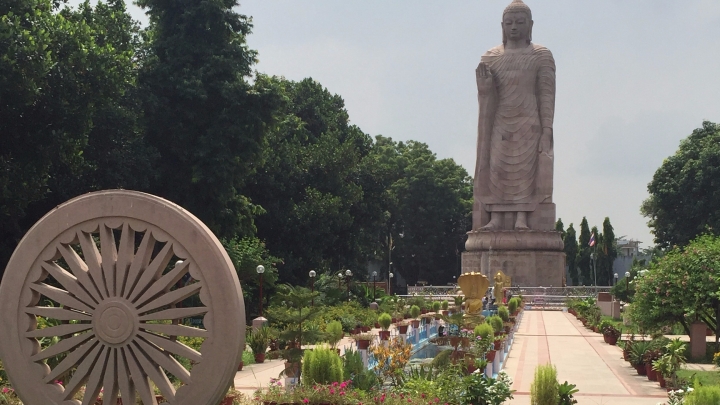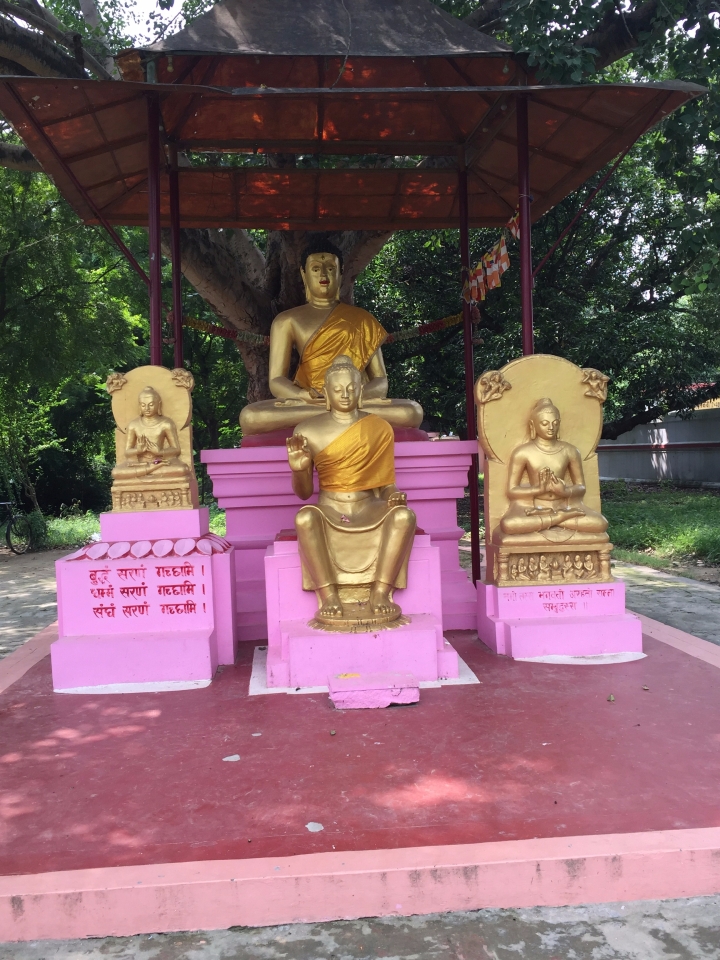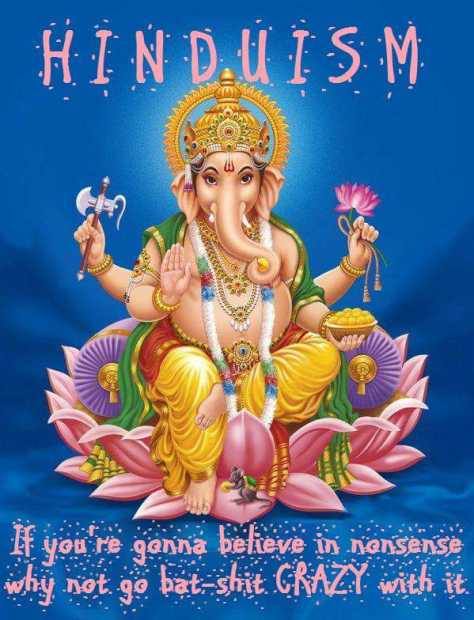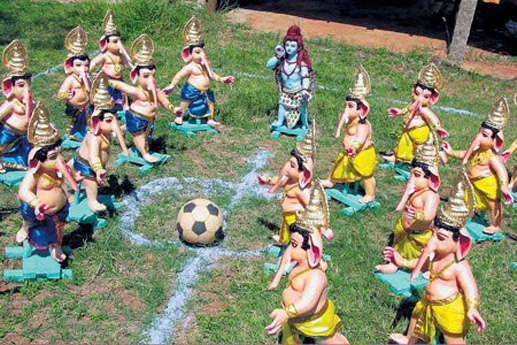Indian men enjoy the notorious reputation of having their own special dialect when the talk is happening with women, whatever be the language. The Indian male’s brain interprets ‘NO’ coming from a female as ‘Definitely, Maybe’. No matter the language / spelling / tone / delivery, if you ask them what they heard, it’s some form of ‘yes’.
Today, we – me and a female friend of mine – stumbled upon one such specimen. At Sarnath, of all places. It was the bunch of tour guides around this calm, serene, almost secluded place. Maybe the exceptional heat of this month of August had acted as a contributing factor. Even so, there were a handful of people around.
So, imagine our surprise being flagged by a bunch of casually dressed men before we had even entered the vicinity. As our car approached, we saw a bunch of men waving their hands vigorously. They then took to tapping the anatomy of our vehicle, which was in motion no less. Of course, our driver whose very second day it was driving for a cab aggregator, was no less surprised, and stopped. Before even our GPS could announce that we had arrived at our destination, here were tour guides asking us to contract their services. We fended them off and continued to a large gate to what seemed to be a tourist place.
We did not know we were going to have to keep fending them off. If I had ever seen a ‘Never Give Up’ attitude practiced in utmost profundity, it was here. At Sarnath. 1:30 pm after the noon. In sweltering heat and absolutely intolerable humidity.
From the moment we stepped out of our car right in front of the gate to the Sarnath temple, these men took to diligently following us. They suggested we hire them for a paltry sum of Rs.20, to have us trail them around the monuments and listen to them talk. And to that we said, ‘No’.
Entering the temple premises, a garden welcomed us, divided by a paved walkway, lined by a rectangular channel filled with water in which lotus buds bloomed, the channel precisely labelled as a ‘pond’. In fact, the channels were sub-divided into four-ish sections and were individually identified as ponds as well. To me, personally, the signboards calling these ponds were of the ‘Ce N’est Pas Une Pipe’ variety but there was a purple lotus blooming in one of the ‘Ponds’ and that distracted me from my art critic exercise. Concluding that if the lotus was happy it being a pond, so was I.

I had a feeling that we wouldn’t make much use of the tour guide hollering at us from behind, trying yet another way to persuade us to spend an incredulously paltry sum of Rs.20 on him.
To his credit, though, he explained to us that some organisation was already paying them a salary so he wouldn’t ask for a heavier sum. It was twenty rupees, that’s all. The green tender coconut we would go on to have later on cost Rs.40 a pop.
But, it was still a ‘No’ and that seemingly doubled his confidence that we would give in. We wanted him to leave. We had already spent a trick we often use to ward of beggars – ignore and pretend not to see them so they’ll go. It was time for something new – try to lose the Guide. I’ve seen a few James Bond movies in my time. This was as good a time as any to use it.

While looking like we were headed straight toward the 35-ft tall statue of Lord Buddha, we took a sudden right toward the Thai temple, which sports Thai architecture. However, after getting there, we decide to look at a number of idols of the Buddha adjoining the temple area. Approaching the clearing from another direction was another tour guide, dispensing his services to a family following closely. We heard that it was a former Thai PM who had inaugurated the place, and that all the statues there were from Thailand.

That last bit sounded unlikely and Internet baba hasn’t helped much in this regard.
What I do know now after an elaborate Internet search a day later is that the standing Buddha statue towering over the premises took 14 years to construct, consists of 815 stones, and cost Rs. 2 crore. This statue was inaugurated by former Thai PM in 2011.
The other statues were unlikely to have anything to do with Thailand, IMO. On some, the gold paint was chipping away, to reveal an underlying layer of cement if I am not wrong. Even the laughing Buddha in gold could do with looking a little more laughing Buddha-esque. The pink colour around the place makes me think of Bahujan Samaj Party’s pink reign.
While the guide’s wards incessantly took selfies at what was a re-enactment of Lord Buddha’s first sermon ever, we soaked in the view. Enlightenment on one end, copious perspiration on the other. We could see ‘our’ man in the distance, waiting for us to retrace our steps into his area of influence.
Off to the Vipassana temple right ahead, we spent a few minutes wondering about the absolute peace we felt there. The Guide not inclined to talk here. There was only the flash of our co-travellers’ selfie cameras as they posed in front of the Buddha sitting in deep meditation. We could get used to that.
Once out and towards the standing Buddha, we found ourselves again in the path of ours-but-not-yet Guide. It was still a ‘No’. After the third ‘No’, it felt like a different kind of temple run, the video game – Dodge tour guides anywhere you see them. Saying ‘No’ gives them more lives.
Our co-travellers were now immersed in a political debate centered on the price of tomatoes, with the guide noting that the ghastly fruit was selling for Rs.80 a kg – a travesty. We moved on, having nothing to offer other than a nod of commiseration.
Once at the Buddha’s feet, you felt a certain calm. Even at that ungodly hour of 2:00 pm-ish, there were dozens of incense sticks lit with prayers, hope, reverence. It wafts in the air, the humidity adding a certain gravitas.
In the background, a busload of travelers got off their giant 16-wheeler and guides standing there eyed the lot. We thought that was ‘advantage us’. How wrong we were!
Our tour of the calm Thai temple over, we stepped off the property, only to be directly targeted by a fresh set of guides, forcing us to think on our feet. We decided to try the museum up ahead and started hurrying. One of the guides started following us, enthusiastically trying to convince us that as tourists, we were completely lost without his able guidance (words are mine not his; the idea, though, totally his). Trying to lose him, we ended up on a marriage lawn, workmen tidying up after a wedding. We still had the guide on our tail and as we turned around to get out, he appeared right in front of us telling us he knew a shortcut to the museum through the marriage lawn.
By which time, my friend had had it. As with men, so with tour guides, one can say. A simple ‘No’ is quite simply inadequate. We told him to get away from us, stop following us, and make himself scarce, that too delivered in Hindi in as proper a UP accent as she could muster.
Finally, we could see that he was amused. But more importantly, he decided to leave us in peace. The gentleman beat a retreat, leaving us free to roam about among the ruins of Sarnath in this boiling heat. Free to not know of all the amazing stories he held close to his chest. Free to read the display boards and plaques in mutual silence. Amidst those ruins that speak of some very significant moments in the development of the Indian civilisation, our experience stood as a commentary, an affirmation of a die-hard tradition of the Indian culture : that more than anything else, ‘No’ indicates a point of bargain.
Saying No to tea at the neighbour’s is just a way of communicating that we want them to ask us a fourth, a fifth, and a sixth time so we can ensure that proper social conduct has been followed on both ends before adding that they absolutely must not fry those ‘pakoras’.
Saying No to a beggar at traffic signal is having him follow us over the next 80-meter stretch before guilting us into giving money.
Saying No and walking away from a roadside seller of anything is to say that we want him to come up with a lower price.
Saying no to a well-wishing family member or friend trying to help is to say we want them to but are afraid of being seen as too direct or honest to ask for it and genuinely appreciate it; we’d much rather place the burden of accountability on them, even for doing us a favour.
Saying no to a child making mischief is to test her commitment to her craft and her tolerance to scolding, which may not always be merely verbal.
Saying No to men leering at you is taken an invitation to pursue – there are umpteen Bollywood blockbusters that would make these loafers feel vindicated.
Saying No in much of India in most of the situations requires a certain vehemence or some deft cloak-and-daggery. Even on a super hot, sultry day spent amidst centuries old ruins.













You must be logged in to post a comment.